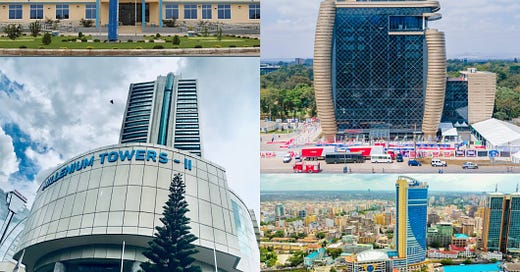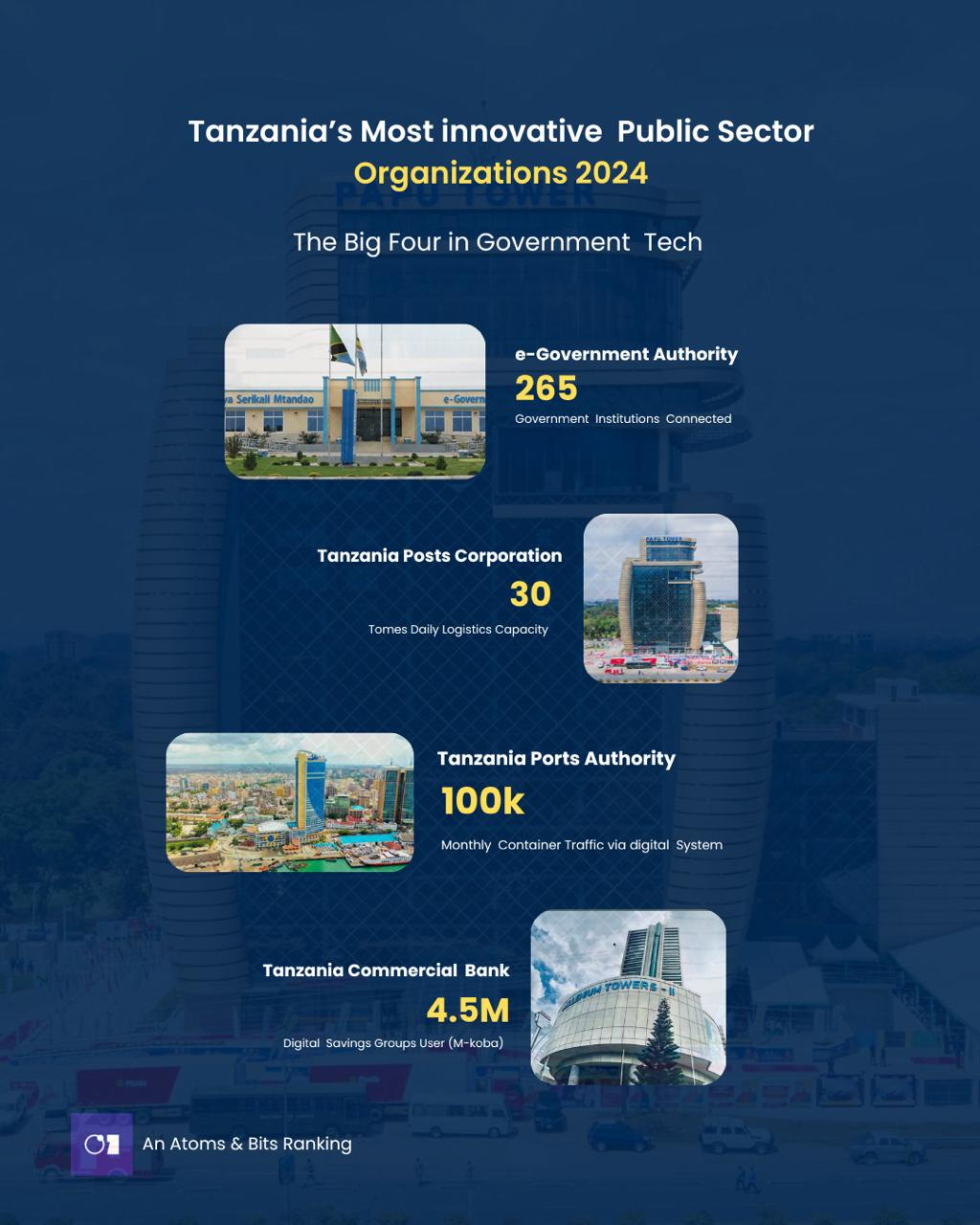Data sourced from our exclusive interviews during the Tanzania Annual ICT Conference (TAIC) 2024, official agency reports, and verified government statistics as of October 2024. This analysis originally appeared in Atoms & Bits Magazine (July-October 2024).
1. e-Government Authority
e-GA is the main organization responsible for Tanzania's digital transformation. It has developed several core systems now used across public sectors.
These include….
Government Enterprise Service Bus (GoVESB): Enables data sharing between government systems, currently connecting over 100 services
e-Office: Used by 265+ government institutions for paperless operations
Government Mailing System: Secure email for over 35,000 public servants
Government Network (GovNet): High-speed connectivity linking 265 public institutions
e-Government Security Operations Centre (eGSOC): Monitors cyber threats across government systems
The authority's e-Government Research, Innovation and Development Centre (eGovRIDC) develops local solutions and builds technical capacity among youth from higher learning institutions.
2. Tanzania Posts Corporation
TPC has transformed from traditional mail to become a digital logistics leader.
Posta maintains offices in every district nationwide, with logistics capacity reaching 30 tonnes and refrigerated transport options. This extensive network makes it one of Tanzania's largest delivery providers.
The corporation’s new Kitonga platform works like a full e-commerce marketplace.
Consumers can shop online for electronics, fashion, food, books, art, and authentic Tanzania products.
Local sellers list their products while TPC handles nationwide delivery through its postal network. The platform integrates digital payments and gives sellers tools to track sales and manage inventory.
Supporting these digital retail operations, TPC runs Posta Kiganjani for mobile and web services, plus virtual post boxes linked to phone numbers for TZS 14,500 only.
The corporation uses e-GA's e-Office for document management and the Government e-Payment Gateway (GePG) for transactions, while the IPS system handles international shipment tracking.
3. Tanzania Ports Authority
TPA has modernized Africa's fifth-largest port system through comprehensive digitization.
Dar es Salaam Port now handles 100,000 containers monthly, up from 60,000, thanks partly to integrated digital systems.
The authority's Enterprise Resource Planning (ERP) system, fully operational from 2022, manages everything from accounting to human resources. This single platform monitors all port activities and financial transactions.
TPA completely eliminated paper invoices in 2015, moving to electronic payments through banks and mobile money services.
A sophisticated security network protects operations through 486 CCTV cameras, smart card entry systems, and electronic fencing.
The Single Window system connects over 2,000 clearing agents with TRA and other stakeholders, streamlining cargo clearance.
For terminal operations, TPA employs three core systems:
Terminal Operating System tracking cargo movements
Electronic payment platform integrated with GePG
Terminal Management System monitoring port operations
These digital improvements, combined with infrastructure upgrades, have helped TPA handle increasing cargo volumes—from 1.18 million metric tons (MT) in 1961 to 117.7 million MT in 2020/21. The Dar port alone aims to expand capacity from 16 million to 25 million MT annually.
4. Tanzania Commercial Bank (TCB)
With additional reporting by Lukelo Ngajilo, Senior Information Systems Auditor at KPMG East Africa
TCB pioneered digital banking partnerships in Tanzania through early collaborations with mobile network operators (MNOs).
The bank first partnered with Vodacom in July 2019 to launch Songesha, which let M-Pesa users get small loans directly on their phones. (The service continues under a new banking partner.)
TCB and Vodacom Tanzania teamed up again in June 2021 to introduce M-koba, which now serves over 4.5 million users and hosts more than 400,000 informal savings groups.
Building on this experience, TCB (previously TPB Bank) expanded by helping launch Airtel Vikoba (in August 2023) and Tigo Pesa Kikoba (in April 2024). That move brought new USSD-based financial services to the MNOs' combined 42 million subscribers.
The bank's own T-Cash Collection system integrates its 82 branches and agent network, while partnerships with SACCOs allow cooperative members to use TCB ATMs. This focus on accessibility extends to an agreement letting Tigo users withdraw from TCB ATMs.
Its strategy shows promising results. In Q3 2024, TCB reported TZS 27 billion in profit after tax (81% year-over-year growth), with total income reaching TZS 129 billion. Customer deposits grew to TZS 1.2 trillion, while loans and advances hit TZS 1 trillion.
Under CEO Adam Mihayo's leadership, the bank has turned around from a TZS 46 billion loss last year, showing how state-owned institutions can successfully embrace digital innovation.



